The discussions on Indo-US nuclear deal in 2005 actually started the India-US strategic cooperation, and possibly of India leaning towards USA. Because of years of military purchases from Soviet Union, later Russia, the process had its complexities. India needed high technology American military hardware. U.S. wanted the big market for arms and nuclear industry. The civil nuclear cooperation agreement concluded in 2008. The first Indo-US strategic dialogue took place in Jun 2010. The US then removed Indian Space and Research Organization (ISRO) and Defence Research and Development Organization (DRDO) and some other related companies from its export control ‘Entity List’.

Immediately after Indian independence, USA had wooed India to join them to contain communism. India was reluctant to join any camp. In 1954, USA made Pakistan a Central Treaty Organization (CENTO) treaty-ally. India cultivated strategic and military relations with the Soviet Union. In 1961, India became a founding member of the Non-Aligned Movement to remain equidistant in the Cold War power-play between the USA and the Soviet Union. USA supported Pakistan during the Indo-Pakistani war of 1971. In 1991 after the dissolution of Soviet Union, India adapted to the unipolar world and developed closer ties with the U.S. India chose to leverage strategic autonomy to promote national interests. Also USA needed India to counter the rising, and somewhat assertive China in its Indo-Pacific strategy.

Once U.S. demonstrated accommodation to India’s core national interests and acknowledged outstanding concerns, it resulted in increase in bilateral trade and investment; cooperation on global security matters; support for inclusion of India in United Nations Security Council (UNSC); greater role in World Bank and IMF; and admission into multilateral export control regimes like Nuclear Suppliers Group, MTCR, Wassenar Arrangement, and Australia Group. Post 2000, USA became more open to selling high end military equipments to India. In 2016, India and USA signed the Logistics Exchange Memorandum of Agreement (LEMOA) and India was declared a major defence partner of the USA. In September 2018 India and USA signed the Communications Compatibility and Security Agreement (COMCASA), thus increasing inter operability between two nation’s militaries. A 2019 Gallup poll found that 72% Americans viewed India favourably. Bilateral trade in goods and services grew at an average annual rate of 7.59 per cent from 2008-2018, doubling in value from US$ 68.4 billion to US$ 142.1 billion. India and US are targeting to increase bilateral trade to US$ 500 billion, and both the governments are working on “hiccups”. President Barrack Obama became the first US president to be the chief guest at the Republic Day on 26 January 2015. Among the increasing cooperation in defence, aviation has seen the fastest results.

Geo-strategic Appreciation
In spite the 12 July 2016 international tribunal ruling against China in the South China Sea (SCS), belligerent China refused to accept the ruling and claimed to usurp nearly 3.5 million square km of mineral and oil rich sea and which accounts for nearly 12% of world fishing catch. China has created seven new islets and in turn extended its Economic Exploitation Zone (EEZ) rights over 90% of SCS and enhanced Air Defence Identification Zone (ADIZ), both of which have serious security and economic implications. China has been investing in Indian Ocean region and using geopolitical influence through military supplies, airfield and port construction and economic aid. India sees this as its encirclement. Through its Belt and Road Initiative (BRI) also known as the One Belt One Road (OBOR) China is making infrastructure development and investments in countries across Europe, Asia and Africa. In the garb of enhancing regional connectivity, Chinese are pushing dominance in global affairs with a China-centered trading network. China supports Pakistan’s military-industrial-complex in a big way. All these have security implications for India and USA.

While USA remains well ahead in both Gross Domestic Product (GDP) and military spending, but both Russia and China under strong leaders are gaining ground and already have significant influence in world affairs. Meanwhile India is today the fastest growing large economy and among the first four countries in most economic and military indicators. European economies are slowing. Oil, and in turn the Arab world, is losing significance with solar and wind energy becoming cheaper alternatives. This would mean global realignments. India needs to thus readjust to the emerging global order.

Indo-US Military relations
US-India military relations seek to advance shared interests of maintaining security and stability, defeating violent religious extremism and terrorism, preventing the spread of weapons of mass destruction and associated materials, and protecting the free flow of commerce. India is key to the US’ ability to create a stable balance of power in the larger Indo-Pacific region and to shore up its credibility in the region in face of rising Chinese economic and military muscle power. In June 2015, US defence secretary Ashton Carter became the first American defence secretary to visit an Indian military command, and similarly in December 2015, Manohar Parrikar became the first Indian defence minister to visit the US Pacific Command. Indo-US 2+2 Ministerial dialogue has become a regular feature since inaugural held on 06 September 2018 in New Delhi between the defence and foreign ministers of the two countries.

QUAD
The Quadrrilateral Security Dialogue (QSD, also known as the Quad) is an informal strategic dialogue between the United States, Japan, Australia and India that is maintained by talks between member countries. Initiated in 2007 by Prime Minister Shinzo Abe of Japan, the dialogue is paralleled by significantly large joint military exercises named ‘Exercise Malabar‘. The diplomatic and military arrangement was widely viewed as a response to increased Chinese economic and military power, and the Chinese government responded to the Quadrilateral dialogue by issuing formal diplomatic protests to its members. The security pact has become all the more significant in view of China usurping most of the South China Sea by creating man-made islands, and causing significant tensions in the region.
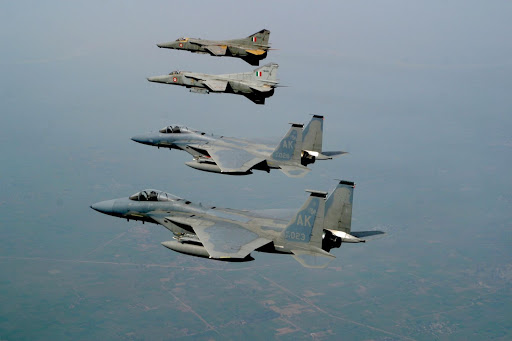
Indo-US Military Exercises
Indo-US military exercises have come a long way since exercise ‘Shiksha’ of 1963 when Indian Air Force (IAF) was exposed to modern air defence concepts and high performance air combat. The two armies have been conducting exercise Yudh-Abhyas. US, India, Japan Navies participate in annual exercise ‘Malabar’. Rim of the Pacific Exercise (RIMPAC) covers the broad expanse of the Indo-Pacific. 2004 onwards Cope India series of Indo-US air exercises began. State of the art aircraft participate from both sides. Participation in Red Flag advanced air combat training exercises at Nellis Air Force Base, Nevada, and at Eielson Airbase in Alaska give IAF exposure to NATO like air environment. Cope India Exercise are a series of international air exercises between IAF and USAF conducted in India. The first such exercise, was conducted at Gwalior in 2004,. Subsequent additions were held in 2005, 2006, 2009 and 2018.

American Fixed Wing Aircraft Start Inducting
IAF purchased six Lockheed C-130J-30s Super Hercules aircraft in early 2008 at a cost of over US$ 1.2 billion for its special operations forces under US government’s Foreign Military Sales (FMS) program. Seven more were ordered later. 11 Boeing C-17 Globemaster III strategic airlift military transport aircraft were inducted next. C-17s can carry 77.5 ton vis-à-vis IL-76′s 50 ton. The Boeing P-8I Poseidon is a modified Boeing 737-800 designed for anti-submarine warfare (ASW) and ship interdiction roles, and also to collect Electronic Intelligence (ELINT). An agreement was signed in January 2009 for eight P-8Is at a total cost of US$2.1 billion. Contract for four additional P-8Is was signed in 2016, In November 2019, the Indian government approved the procurement of another 6 P-8Is. In 2009, the IAF inducted three specially equipped Boeing 737-7HI Business Jet (BBJ) for VVIP duties. Two custom-made B-777 have also been procured to replace the older Air India B-747 jumbo jets for VVIP duties. To be flown by IAF, they will be operational soon. USA has agreed to sell two state-of-the-art missile defence systems, the Large Aircraft Infrared Countermeasures (LAIRCAM) and Self-Protection Suites (SPS), for an estimated cost of US$ 190 million, to enhance the security of the VVIP planes.

American Rotary Wing Aircraft
22 Boeing Apache Longbow AH-64E have begun replacing the IAF’s older Russian Mi-25/35s attack helicopters. The $1.4-billion deal was also through the FMS route. Eight aircraft were inducted to form the first squadron at Pathankot in September 2019. All 22 aircraft will be in by end 2020. In April 2013 Indian government decided that hence forth the Indian Army will also have its own Attack helicopter fleet. Additional 6 Apache helicopters are planned for Indian Army. 15 Boeing CH-47 D/F Chinook heavy-lift helicopters have been purchased in a US$ 1.0 billion deal. They were formally inducted into IAF at Chandigarh airbase in March 2019. The second airbase will be in the North East. All aircraft will be delivered by 2020.

Boeing Presence and Make-in-India
Boeing’s presence in India dates back over 75 years when Tata Airlines operated a Boeing DC-3 aircraft. Since then, Boeing has been a major player in India’s commercial aviation sector. Boeing’s military aviation connect in India began in 1940s, when IAF acquired the T-6 Texan (Harvard) and the C-47 Skytrain transport, a military variant of the DC-3. With C-17 Globemaster III and Indian Navy’s P-8I maritime surveillance and anti-submarine aircraft, Boeing has become a great partner in India’s military mission-readiness. Additionally, the IAF operates the BBJ for VVIP commitments. Boeing’s AH-64E Apache Longbow attack helicopters and CH-47F Chinook heavy-lift helicopters are under induction. F-18 Super hornet is vying for IAF (114 fighter program) and Indian Navy (57 carrier aircraft) contracts. Boeing has set up Research & Technology Centre in Bangalore.

The F/A-18 Super Hornet Block III will be with ‘Make in India’ long-term partnership commitment. The Block III offers affordable stealth, and extensive capability upgrades that include enhanced network capacity, longer range, even better stealth performance, an advanced cockpit system and new sensors, with the life of the aircraft extended from 6,000 hours to 10,000 hours. A public-private partnership brings together Boeing, Hindustan Aeronautics (HAL) and Mahindra’s global scale, manufacturing and supply chain expertise. HAL has been the single-source producer of 757 over-wing exit doors. HAL has also manufactured the 777 up-lock boxes, F/A-18 gun bay doors, F/A-18 wire harnesses, P-8I weapons bay doors, and P-8I identification friend-or-foe transponders. BEL is also on contract to provide F/A-18 flight deck cockpit panels. HAL recently delivered the 150th gun bay door for the F/A-18.
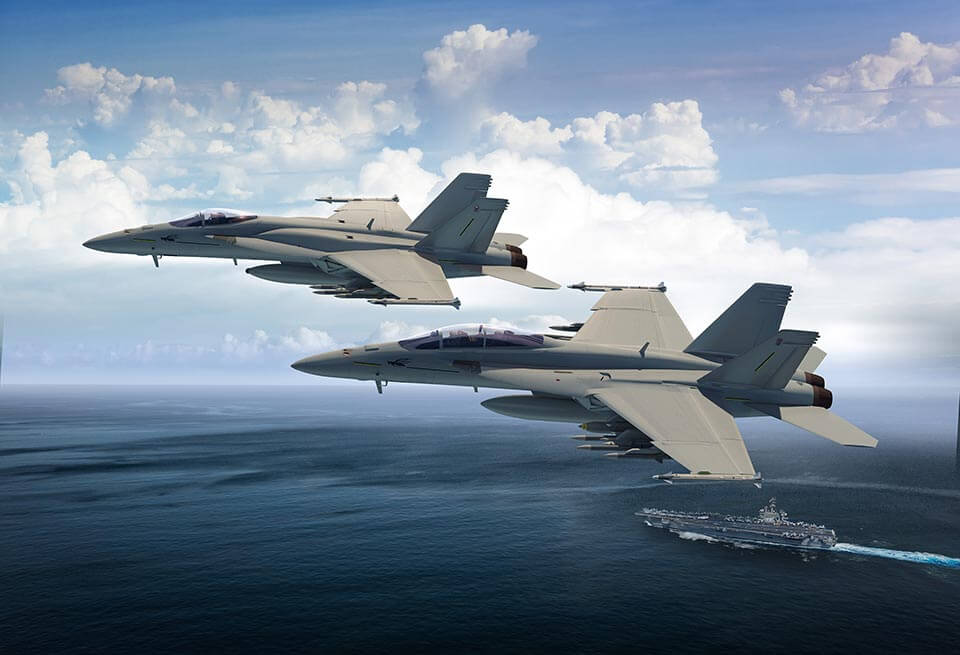
Boeing has invested in engineering centers at Bengaluru and Chennai with a talented pool of 3,000 engineers. Boeing’s joint venture with Tata Advanced Systems Limited (TASL) is for aerospace and defence manufacturing including unmanned aerial systems. The joint venture (JV) will manufacture aero-structures for aircraft and collaborate on integrated systems development opportunities in India. TASL is already manufacturing aero-structures for CH-47 Chinook and Apache helicopters, including for global customers.

In September 2014, Dynamatic Technologies (DTL) and Boeing inaugurated a plant to manufacture critical parts for Chinook helicopters. Dynamatic recently delivered 100 ramp and pylons for Chinook. DTL has earlier been working on the P-8I since 2010. Dynamatic Technologies and Tata Advanced Materials Limited (TAML) have already delivered P-8I power and mission equipment cabinets, and TAML is making auxiliary power unit door fairings and composite tail-cones for the P-8I. Boeing created a facility with TAL Manufacturing Solutions Ltd to manufacture floor beams for the Boeing 787-9 Dreamliner. TAL also makes ground support equipment for the C-17. Bharat Electronics Limited (BEL) has delivered the Indian-designed Data Link II for the P-8I. Data Link II is a communications system that enables exchange of tactical data and messages among the Indian Navy aircraft, ships and shore establishments. BEL has also delivered the identification friend-or-foe (IFF) interrogator. Electronics Corporation of India (ECIL) has provided the speech secrecy systems for the P-8I. Hyderabad based Avantel Ltd has delivered the mobile satellite systems for P-8I. Hyderabad-based Cyient (formerly Infotech) has supported a number of critical design-engineering projects for Boeing airplanes, and currently provides design and stress support on the 747-8 Freighter and the 787-8 and 787-9.
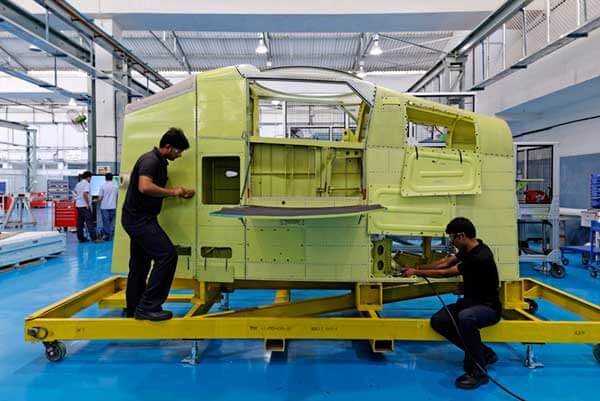
Lockheed Martin Big in India
Lockheed Martin, the world’s biggest arms manufacturer, with a global order book of over US$ 47 Bn (FY 2017-2018), is looking for a “game-changing” partnership in India. Their defence area includes ATC systems, ballistic missiles, precision guided munitions, directed energy weapons, littoral combat ships, armored fighting vehicles, combat and support aircraft, robotics, radars, electronic warfare, satellites, space launch vehicles, among others. They have been in India for more than 25 years. Lockheed Martin is the pre-eminent designer, developer and manufacturer of the world’s most advanced fighter aircraft like the F-22 and F-35. They have a joint venture company with TASL where airframe components for the C-130J airlifter and the S-92 helicopter are manufactured in India. Since production began in 2010, TASL has delivered 120 cabins fully Made-in-India. Today, production of more than 5,000 precision components that compose each S-92 cabin is 100 percent indigenous to India. All C-130Js delivered to customers around the world have major aero-structure components from India.

Lockheed is actively supporting the Digital India, Skill development, and Start-up India and Make-in-India programs. “We have currently integrated over 70 Indian suppliers including Micro, Small & Medium Enterprises (MSMEs) into our global supply chain” said Dr Vivek Lall, the then Vice President Aeronautics and Business Development. “Our partnership with the Indian industry on both the F-21 (for IAF) and S-76D multi-role helicopter (Indian navy) proposals will put India at the epicenter of world’s largest defence ecosystem and deliver unmatched sustainment and export opportunities” he added. 2250 F-16 are still flying globally. TASL has been chosen to produce the F-16s in India. Meanwhile, Lockheed Martin has begun building F-16 wings and will start exporting from the facility in Hyderabad in 2020.
In July 2019. Lockheed Martin signed MoUs with Indian startups to boost India’s aerospace and defence industry US-based Lockheed Martin signed MoUs with Terero Mobility, Sastra Robotics, and NoPo Nanotechnologies to integrate with its supply chain and boost India’s and aerospace and defence industry.
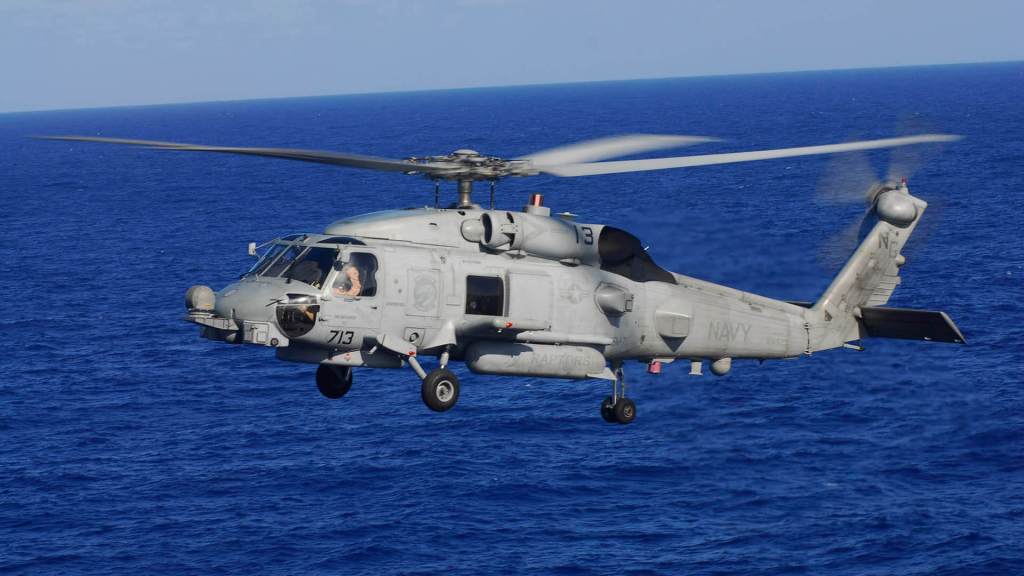
The US has approved the sale of 24 Lockheed Martin’s Sikorsky multi-role MH-60R Seahawk maritime helicopters to India at an estimated cost of US$ 2.6 billion. They will boost the Indian Navy’s anti-surface and anti-submarine warfare operations. Lockheed has been showcasing many other systems to the Indian Armed Forces. Lockheed Martin is a leader in UAV technologies, ranging from micro-UAVs such as the Stalker or Desert Hawk III to larger platforms like the Reaper. They have been actively pursuing UAV opportunities for both the military and civil markets in India.
The Super Hercules is also part of India’s C-130J Roll-On/Roll-Off University Design Challenge. Through this initiative, Lockheed Martin provides research grants for teams from Indian universities to work with local industry partners and mentors from India’s Defence Research and Development Organization (DRDO) to develop design specifications for proposed modules that could be used on a Lockheed Martin C-130J Super Hercules cargo aircraft.
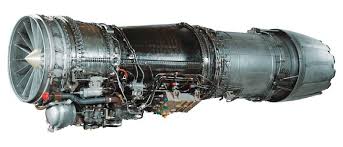
General Electric Company (GE)
GE is an American multinational that operates in aviation, healthcare, renewable energy, and transportation, among many others. GE’s presence in India dates back to 1902 when they installed India’s first hydropower plant. GE’s two companies– GE Power India Limited and GE T&D India Limited are listed on the stock exchanges in India. GE Aviation is the world’s leading producer of large and small engines for commercial, military, business and general aircraft. GE supplies F404IN20 engines for the Light Combat Aircraft-Tejas Mk-1. The F414-INS6 engines are selected to power the MKII version of the Light Combat Aircraft-Tejas. GE’s CFM56 engines power the Indian Navy’s P-8I. GE Aviation is also a leading supplier of integrated systems and technologies for combat aircraft, military transport, helicopters, land vehicles and unmanned aerial vehicles. GE’s systems have been deployed on various Indian platforms including the Hawk Mk 132, SEPECAT Jaguar, P-8I, C130J and HJT-36 Sitara.
India Innovation Growth Program
As a part of its larger commitment, Lockheed Martin has sponsored and supported the India Innovation Growth Program (IIGP) since 2007 in partnership with the Indian Department of Science and Technology, Indo-U.S. Science and Technology Forum, Federation of Indian Chambers of Commerce and Industry, Stanford Graduate School of Business, and the IC2 Institute at the University of Texas. IIGP has supported more than 400 innovators and start-ups with in-depth technology commercialization training and handholding support to commercialize and scale their ventures. To date, the revenue generated for the Indian entrepreneurs through this program is approaching $1 billion.
COMCASA and High End Technology
Communications Compatibility and Security Agreement (COMCASA) is a treaty which US signs with close allies to facilitate interoperability between militaries and for sale of high-end technology. It is the India specific version of the much wider Communication and information on Security Memorandum of Agreement (CISMOA). It allows India to procure and transfer specialized equipment for encrypted communications for US origin military platforms like the C-17, C-130, and P-8Is, thus improving operational efficiency. Currently these platforms use commercially available communications equipment. In June 2017, the US State Department approved the sale of 22 General Atomics MQ-9 Guardian/Predator-B long-range unmanned combat aerial vehicle (UCAV) drones to India. The MQ-9 has both land and sea variants, and can be armed with up to four AGM-114 Hellfire air-to-surface missiles and laser-guided bombs. The Pentagon and India’s MoD are working to “tailor” the Predator B UCAV for export to the all three Indian Armed Forces.

Defence Technology and Trade Intiative (DTTI)
The India US Defence Technology and Trade Initiative (DTTI) was signed in 2012. DTTI main aim is to strengthen India’s defence industrial base, explore new areas of technological development and expanding Indo-US business ties. DTTI initiative is led by US Undersecretary of Defence for Acquisition and Sustainment and Indian Secretary for Defence Protection. 9th DTTI meeting was held 0n 24 October 2019. A significant achievement of the meeting was the signing of ‘Statement of Intent’ with respect to key deliverables in the near, medium and long terms. This will assist in bringing sustained focus on some of the projects and signal commitment of both sides towards continued collaboration on mutually beneficial issues. The DTTI has now matured enough where its varied activities could be translated into accomplishments. Among the ambitious projects identified are a plan to share jet engine technology, an initiative that has floundered given a strict export control regime in the US and the lack of a strong business case from the Indian side. There is a strong suggestions from the industry to set up a Defence Industry Advisory Committee (DIAC) that will be able to supplement government efforts to promote technology sharing, but there has been reluctance from the US to take it up. Focus on startups is likely to enable US-based research labs to work in coordination with Indian companies for cutting edge defence technologies. In addition, the two sides are also discussing the possibility of jointly developing systems for approved third nations to pursue export opportunities. Cooperation in the field of space technology is also of interest.
Strategic Trade Authorization
United States has designated India as Strategic Trade Authorization-1 (STA-1) country that will allow country to buy highly advanced and cutting-edge sensitive technologies from America. This coveted status brings India in par with US’s closest allies and partners such as NATO allies, Japan, South Korea and Australia. With this, there is an ease in restrictions for high-technology product sales to India, and India will receive license-free access to wide range of dual-use technologies in conjunction with steps that India has committed to take to advance its export control objectives. It will allow US companies to more efficiently export much wider range of products to Indian high technology and military customers. It will benefit US manufacturers while continuing to protect its national security. Bilateral defence trade, essentially zero in 2008, reach an estimated USD 18 billion by end of 2019.

US-India Business Council (USIBC)
The U.S.-India Business Council (USIBC) was formed in 1975 as a business advocacy organization to enlighten and encourage the private sectors of both India and United States to enhance investment flows. The organization serves as a direct link between business and Government leaders, resulting in increased trade and investment to strengthen ties between the two nations. Aerospace & Defense are a major area today. There was a large US delegation at the Aero India 2019.
Defence Policy Group (DPG)
Early August 2019, Indian and American officials agreed to pursue a policy environment conducive to collaboration between the defence industry and start-ups in both countries. The understanding in this regard was reached during the 15th meeting of the India-US Defence Policy Group (DPG) in Washington. DPG is the top official-level meeting mechanism between India and the US on defence issues, which comprehensively reviews and guides all aspects of bilateral cooperation between the two countries. The meetings take stock of the progress made in various fields of defence cooperation in recent years, including in defence trade, technology, procurement, industry, R&D and mil-to-mil engagement. There are various working groups.
Threat of Sanctions against India
In October 2018, India inked the agreement worth US$5.43 billion with Russia to procure five S-400 Triumf surface-to-air missile defence system, ignoring America’s Countering America’s Adversaries Through Sanctions Act (CAATSA). The U.S. threatened India with sanctions. India was also threatened over India’s decision to buy oil from Iran. Sanctions if imposed could have a disastrous effect on Indo-US relations. India’s eyes this as being untrustworthy. But finally India will do what is good for Indian interests.

Congruence and Way Ahead
In 2012 US President Barack Obama initiated a foreign policy shift to look east to neutralize rising China. Pentagon deploys 60 percent of US submarines in Asia. Funding for US Pacific Command (PACOM) has been on the increase. India is key to the US’ ability to create a stable balance of power in the larger Indo-Pacific and at a time of resource constraints, it needs partners like India to shore up its sagging credibility in the region in face of Chinese onslaught. The key areas of action in US “Pivot to East Asia” regional strategy have been strengthening and re-balancing bilateral security alliances; deepening working relationships with emerging powers; engaging with regional multilateral institutions; expanding trade and investment; forging a broad-based military presence; and advancing democracy and human rights. United States has thus been establishing military, economic, and diplomatic ties with countries adjacent to China. End August 2019, the new US Defense Secretary Mark Esper discussed future steps needed to be taken for India and the United States to work together more closely, during his conversation with Defence Minister Rajnath Singh.
Rising China and common security concerns have brought USA, Japan, Australia, ASEAN and India closer on strategic approach in the region. The world’s biggest democracies finally stand on a shared platform; have some congruence in their world view; and most importantly feel the need to work together on many counts. Aerospace is the real place for joint action. And India and USA have taken a conscious first big step.
This article was published in Indian Defence Review (IDR)and has been significantly updated

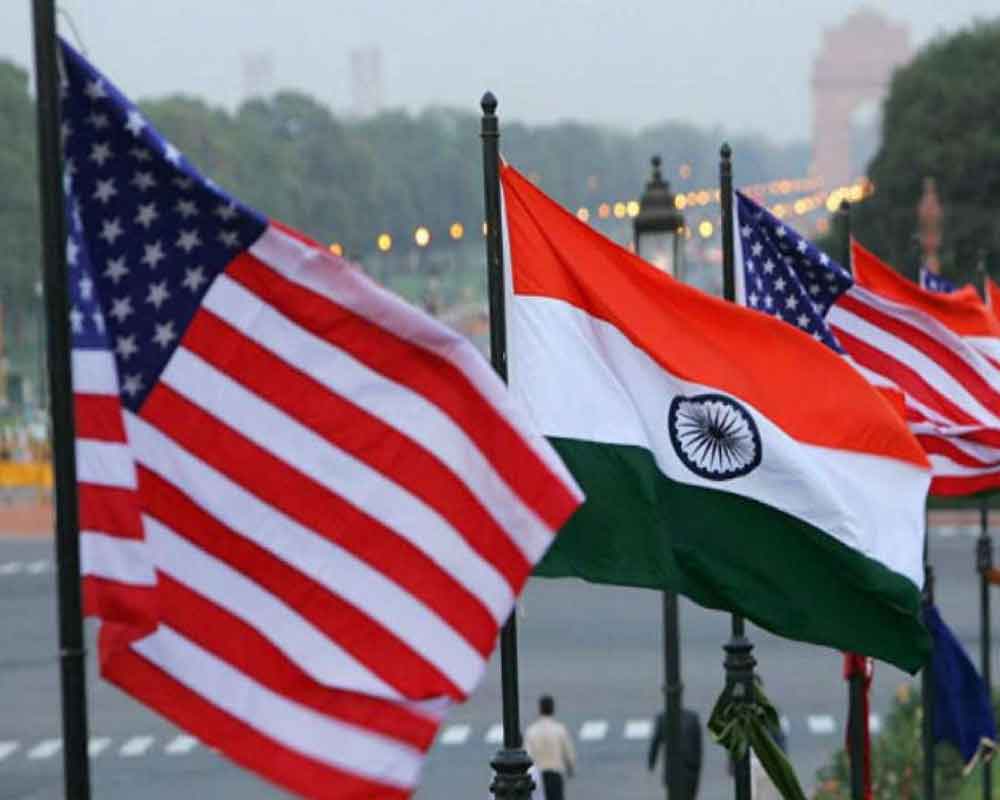
Nice
LikeLike
Happy Reading
LikeLike
Yes. Three and Russia is also half Asian
LikeLike
Very informative
LikeLike
Happy reading. More to come
LikeLike